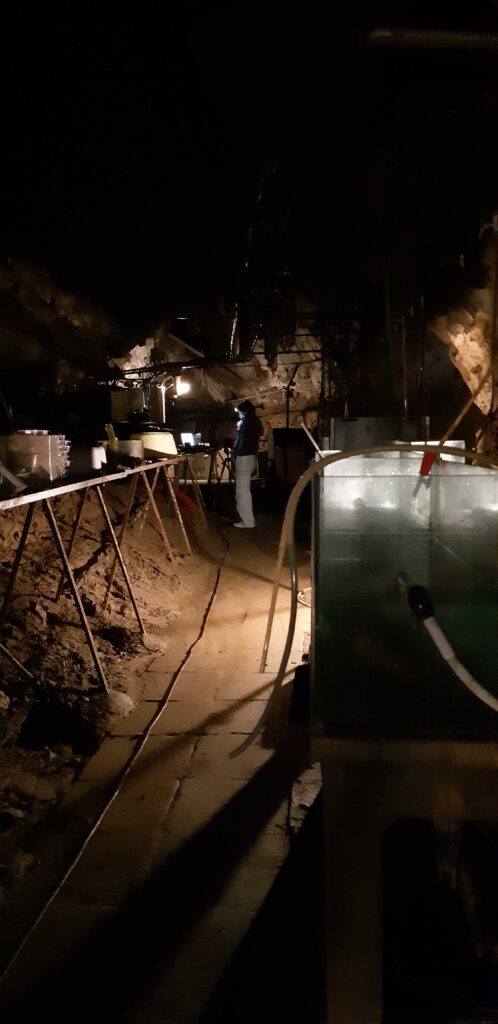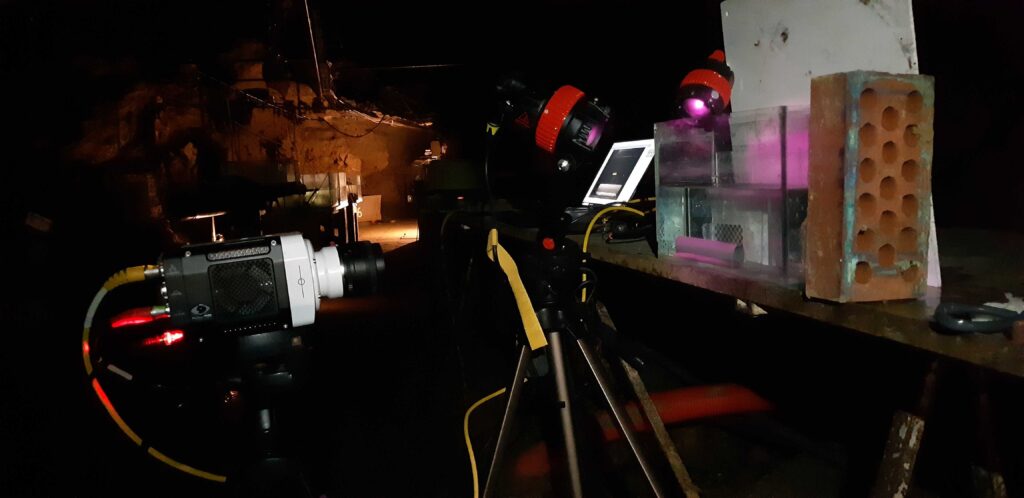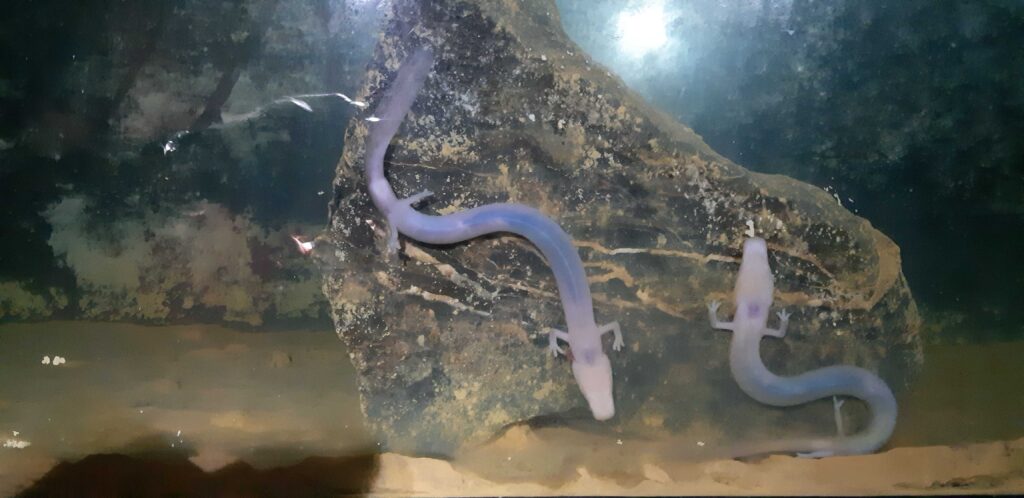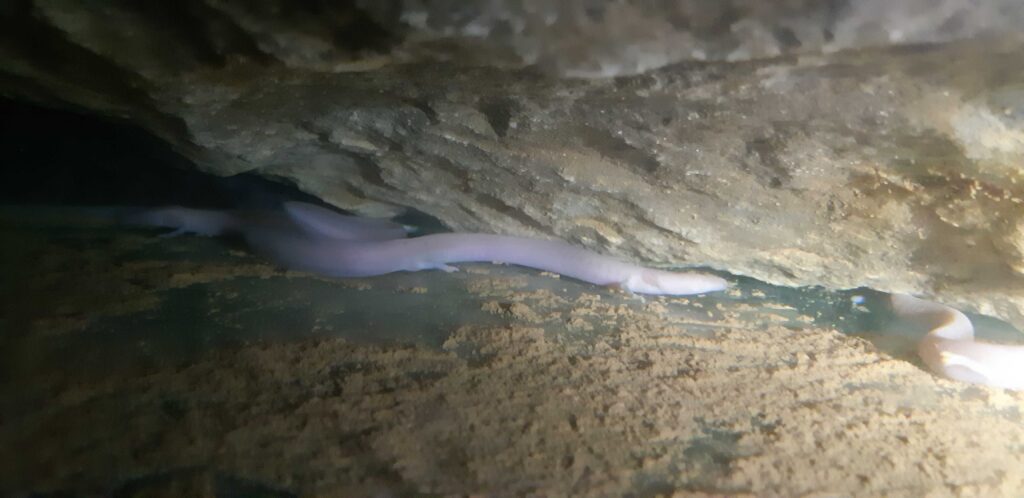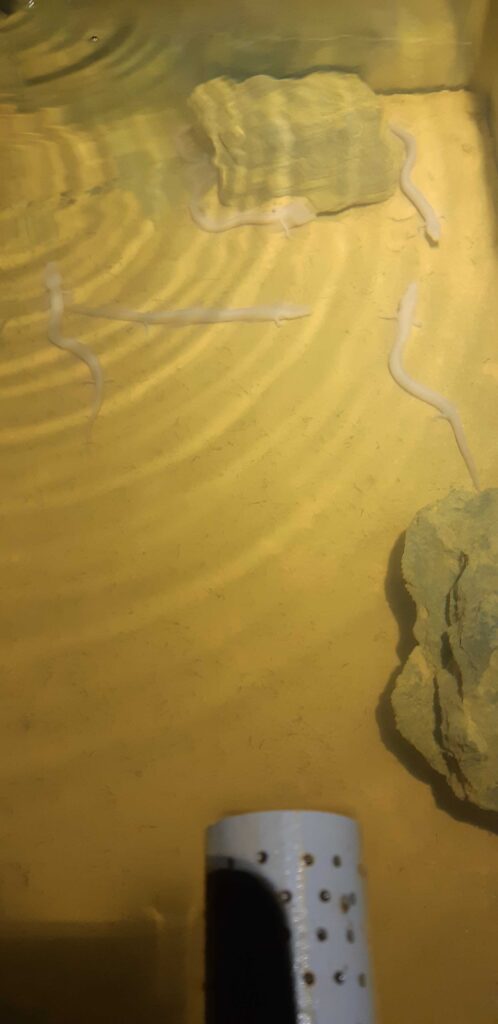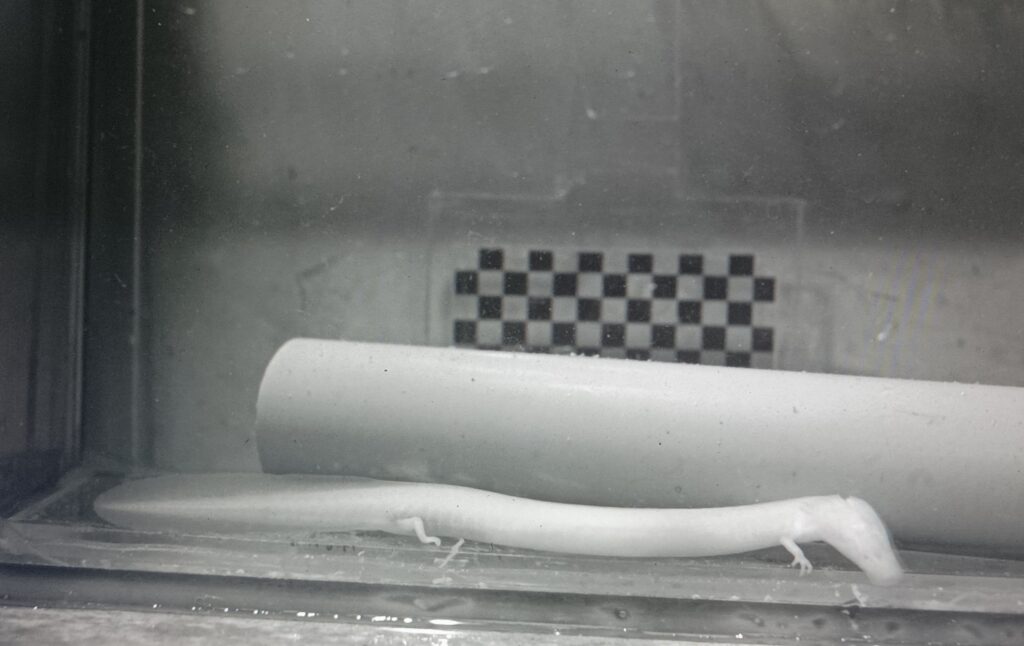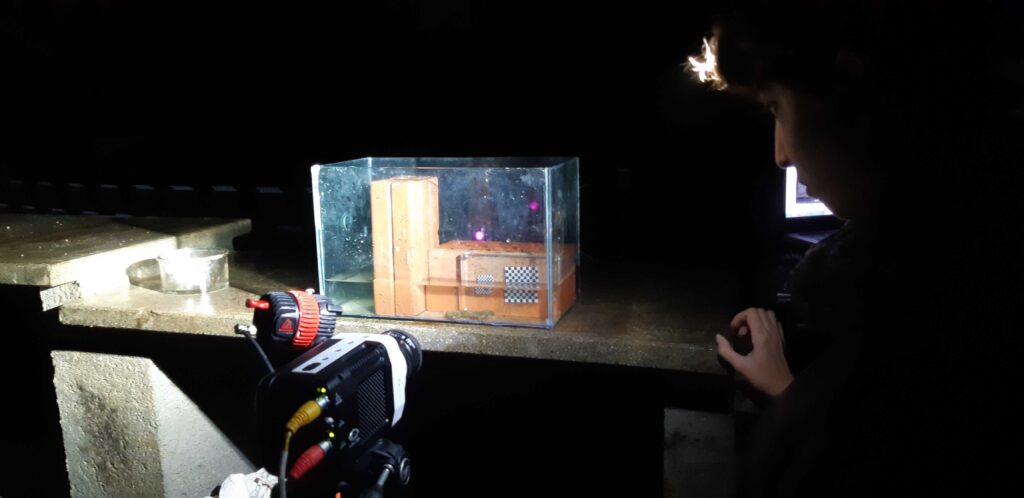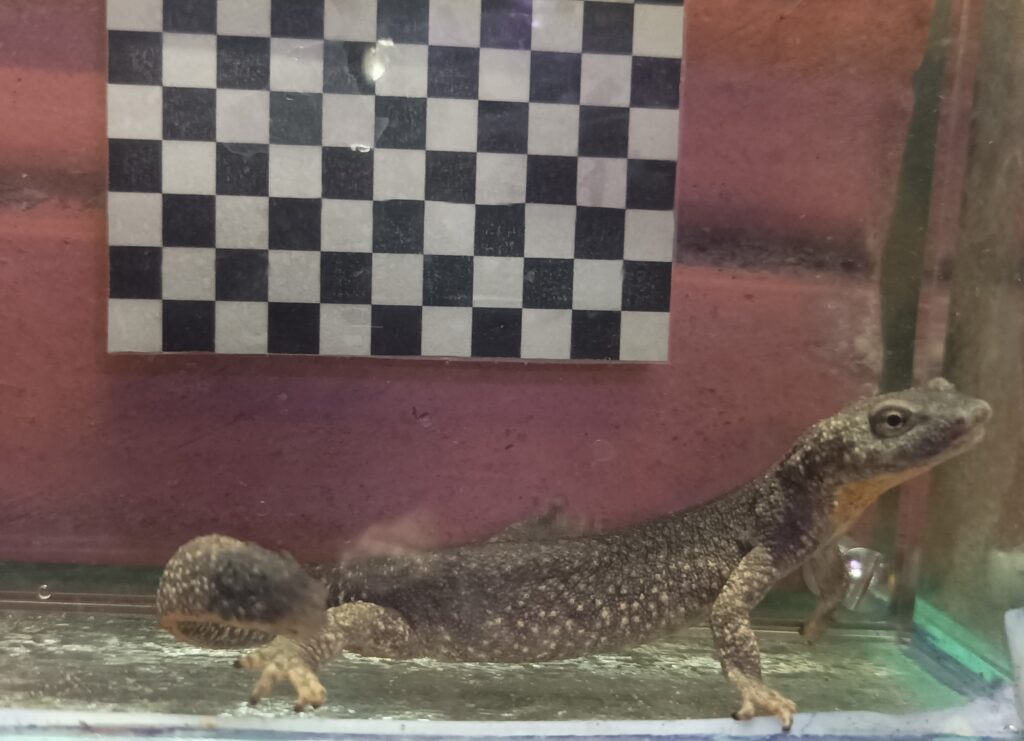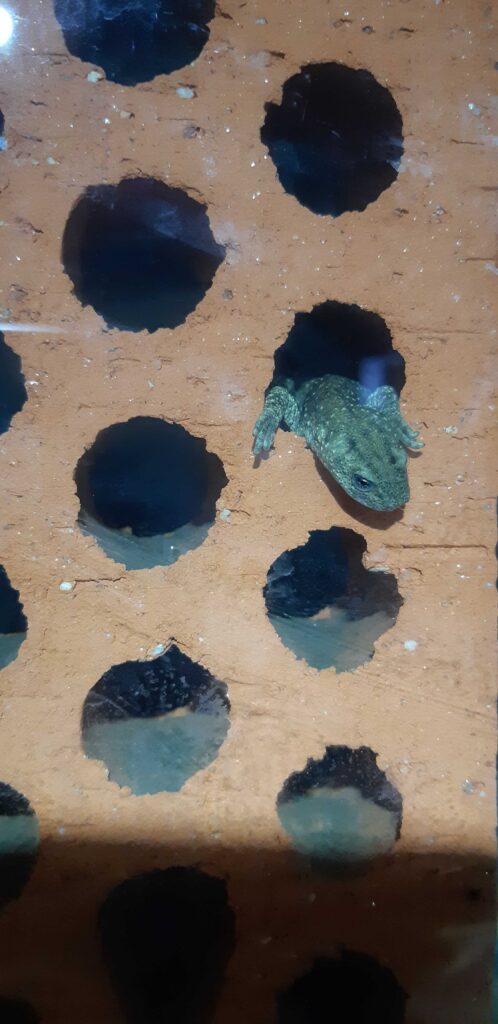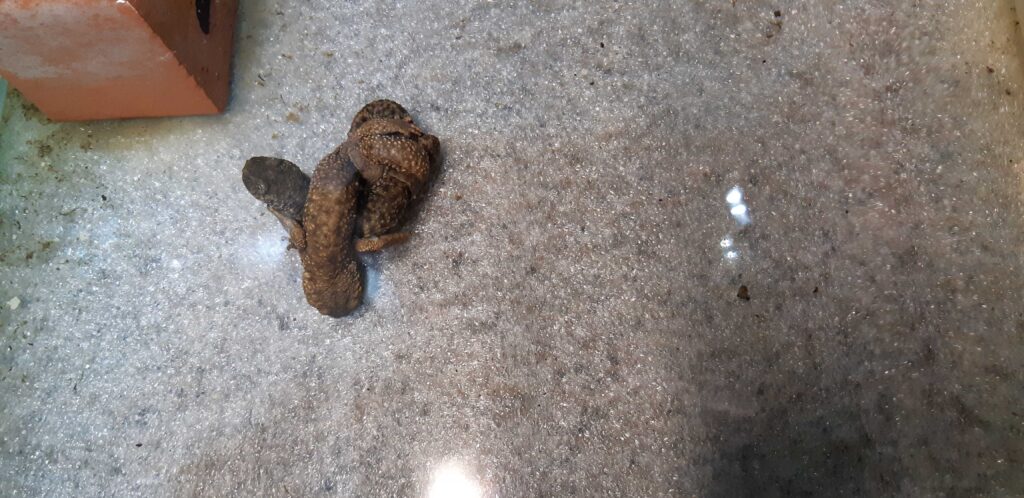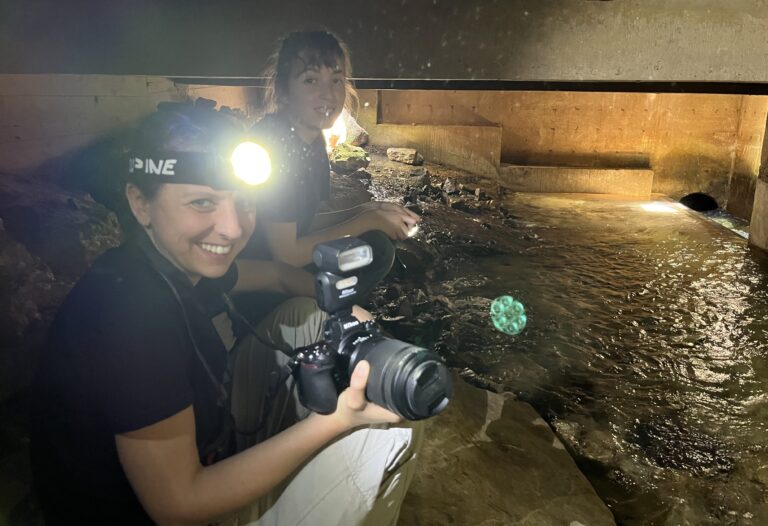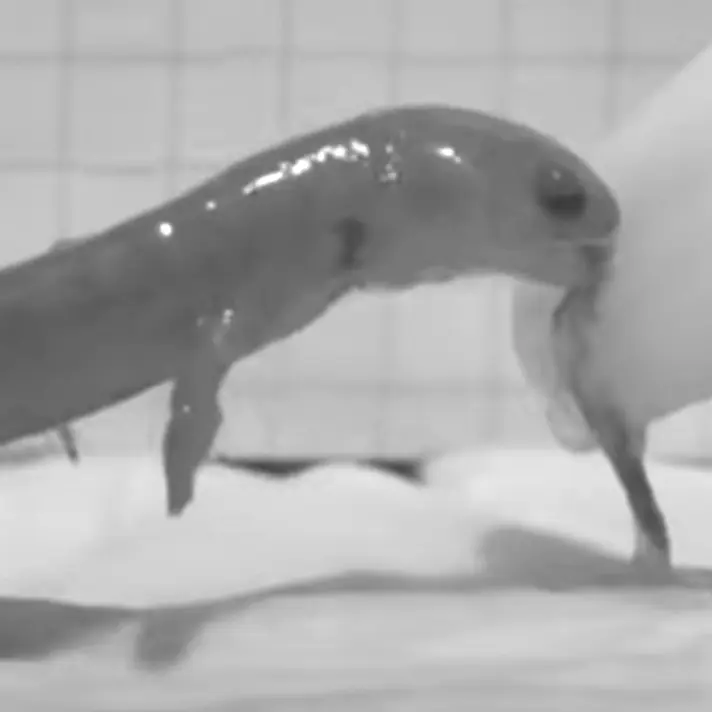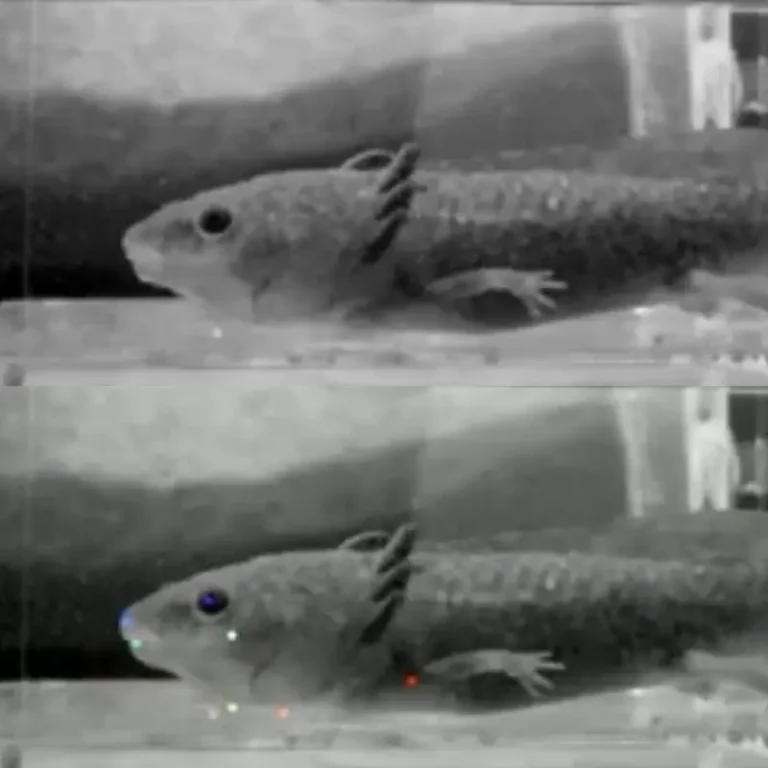Do you like caving ?
In early September, Anthony Herrel and I went to Moulis (Ariège, France) to visit the CNRS laboratory cave part of the SETE, hosted by our collaborator Olivier Guillaume, without whom this would not have been possible. This underground laboratory, founded in 1948, is dedicated to the study of cave-dwelling organisms and their karstic environment. Among the cave-dwelling organisms maintained and bred at the Moulis laboratory, we had the chance to film two species of cave salamander: the olm (Proteus anguinus) and the Pyrenean newt (Calotriton asper).
The Olm or Proteus: Salamanders or dragons?
The olms (Proteus anguinus) are native to Slovenia and Croatia. Very few laboratories in Europe breed these animals. At the Moulis laboratory, there have been some clutches of Proteus (the last one in 2019). However, they remain very rare because the conditions favorable to the reproduction of Proteus are not yet known and mastered, and also because Proteus are sexually mature only at about 15 years of age. These elongate animals can reach 20 to 40 cm long and their lifespan is exceptional: they can reach nearly a hundred years! They have a paedomorphic life cycle, meaning they retain larval characteristics throughout their lives (notably external gills). As they live in the total darkness of caves, they are depigmented and blind. But you might wonder: How can they perceive their environment? Our little dragons from the dark can perceive their environment thanks to superpowers called: chemoreceptionand Electrolocation! But what the hell is that? Chemoreception allows the olms to sense their environment with a good sense of olfaction (such as our sense of smell). Electrolocation permit to the olms to navigate in the dark using electric current. They have electrosensory organs called ampullary that can detect weak electric fields helping them to navigate in the cave. Because of their strange appearance, the first written mention of the olm – dating back to the 17th century – referred to it as a baby dragon. Indeed, during floods, the olms were sometimes expelled from the caves in which they lived, and local populations thought they were cave-dragon larvae, mistaking the gills for dragon wings.
During our stay, we managed to record over thirty high-speed videos of several individuals while they werefeeding. This is the first time in the world that such videos have been recorded! It is fortunate for us because the olms can fast for several months without any problems, given their very slow metabolism. These data add a new family of salamanders within our functional dataset on the kinematics of food intake in salamanders.
The Pyrenean newt or Calotriton: only found in the Pyrenees of Andorra, France, and Spain!
The Pyrenean newt (Calotriton asper) has a biphasic life cycle, meaning that individuals undergo metamorphosis from larva to an adult but without associated changes of habitat! In fact, they can spend their entire life in oxygenated water body such as in lakes and streams. Several populations have been identified with a particular genetic signature. At the Moulis laboratory cave, the Pyrenean newts are particularly interesting as different populations are maintained in two different conditions: 1) subterranean populations (hypogeus) and 2) others from populations living in surface streams (epigeus). We were able to film epigean and hypogean individuals under both light and dark conditions. This will enable us to carry out a comparative study between the two types of populations and to explore how these animals have adapted to a subterranean life-style.
